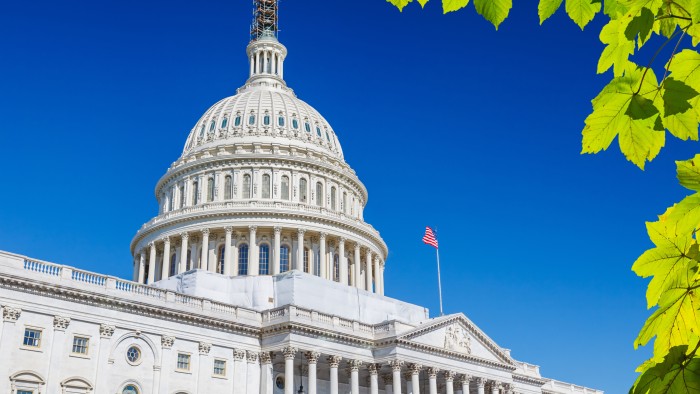White House Values Societal Benefits of Ecosystem Conservation

The White House has issued a directive to point federal agencies toward building ecosystem services valuation into their plans, investments and regulations. This directive, released on Oct. 7, will help agencies synthesize conservation’s ecosystem benefits with its value to society.
“For too long, we’ve thought of conservation as separate from society,” said Ken Elowe, assistant regional director of science applications for the United States Fish and Wildlife Service’s (USFWS) Northeast Region. “What’s actually needed is a more landscape approach, one that doesn’t segregate people.”
“Look at some of our coastal Alaskan communities that are literally falling into the ocean,” Elowe said. “Conservation has societal benefits that can be articulated.”
This can benefit a broad swath of conservation efforts. Counting the community and economic benefits of ecosystem services can help to fund agriculture, climate resilience, fisheries, water quality, wildlife habitat, pollutant buffering, and flood mitigation. Recreational, aesthetic and cultural values can figure into the equation.
Researchers assign value to these services based on how ecosystems enhance nearby communities and businesses – including tourism. The directive asks agencies to build structures for assessment, monitoring and evaluation.
Some federal agencies are already exploring how to wrap these benefits into their planning and evaluation. The United States Forest Service issued a planning rule in 2012 that incorporated ecosystem services. In 1998, the President’s Council of Advisors on Science and Technology (PCAST) published a report that supported valuation of natural capital. This report’s 2011 update recommended valuing ecosystem services.
Jason Weller, chief at Natural Resources Conservation Service, said his agency is preparing a work plan that will be released in March and will incorporate ecosystem services valuation.
“We need to get the inputs and benefits into the outcomes,” Weller said. “What are the public-health benefits from the air-quality investments we’re making?”
“The environmental benefits of incorporating ecosystem services into decision making are pretty well-documented,” said Linda Walker, senior advisor for gulf restoration at the USFWS’s Gulf Restoration Program.
In the region where Walker works, she said, “there has just been some significant investment in looking at ecosystem services valuation.”
On Dec. 10, the National Academies of Sciences, Engineering, and Medicine’s Gulf Research Program awarded $4.4 million in research grants. Some of these grants will support ecosystem services valuation.
“We are so excited about the work that is going to be initiated,” Walker said.
Although federal agencies have been discussing ecosystem services, they are still figuring out how to value them optimally.
“The conservation value to society is not always dollars and cents,” Elowe said. “It is not easy to enumerate. You must consider the economic situations that you’re impacting. There has not been a methodology that has been consistently applied that really lets you look at apples and apples across a region and across an issue.”
“We regularly assess the value that fishing and hunting have for local communities,” Walker said. “In the gulf, specifically as it relates to the Deepwater Horizon oil spill and other natural threats and disasters, we are forced to look at those resources and how those impact the people, communities and economies of the gulf. The Gulf of Mexico is one of the nation’s most productive commercial and recreational fisheries.”
A study of the oil spill has helped to advance this accounting practice. The study looked at the dollar value of lost access to marine and waterfront ecosystems.
“I don’t believe this was a very familiar concept five or six years ago,” Walker said. She said the evolution of this practice has been “very beneficial.”
“One of the things we found out very early with the Deepwater Horizon oil spill was the need for a baseline,” Walker said. “You need a good model that predicts the impacts of the event. Then, you need to be able to weigh this information… when making resource decisions.”
Other weather emergencies such as Hurricane Sandy and Hurricane Irene have elevated the visibility of why ecosystem services matter, Elowe said.
“There was a lot of flash flooding with heavy rains” due to Hurricane Irene, Elowe said. During Hurricane Sandy, “some of the marsh and coastal ecosystems that were protected stood in stark contrast to the undeveloped systems.”
Luckily, before Hurricane Irene, the USFWS had widened some of the stream culverts near road crossings in steep watersheds in New England to allow fish, small mammals, and amphibians to travel easily. Elowe said that widening these culverts aided hurricane resilience for nearby communities by allowing floods to drain easily.
Coastal ecosystems are a federal priority. The directive’s announcement linked to a federal report, “Ecosystem-Service Assessment: Research Needs for Coastal Green Infrastructure.” The report recommended improving methodologies for non-market valuation and benefit transfer.
“Coastal areas have a lot of importance,” Weller said. “22 states have coastal zones. You have ports that are crucial for America’s growing economy and for commerce. There’s the benefits – fisheries, water production, wildlife habitat.”
“The coast is where a lot of people live,” Elowe said. “There’s urban centers. There’s a lot of high-priced investment.”
The directive said that a forthcoming appendix will explain how agencies should proceed with assessing ecosystem services.
Note: The United States Forest Service has supported Conservation Finance Network. Donors and partners outside CBEY and CFN do not review our articles or editorial calendar, but interviewees can review their quotes and Q&As.
To comment on this article, please post in our LinkedIn group or visit us on Twitter. You may email the authors of any of the Conservation Finance Network's articles via our contact form.